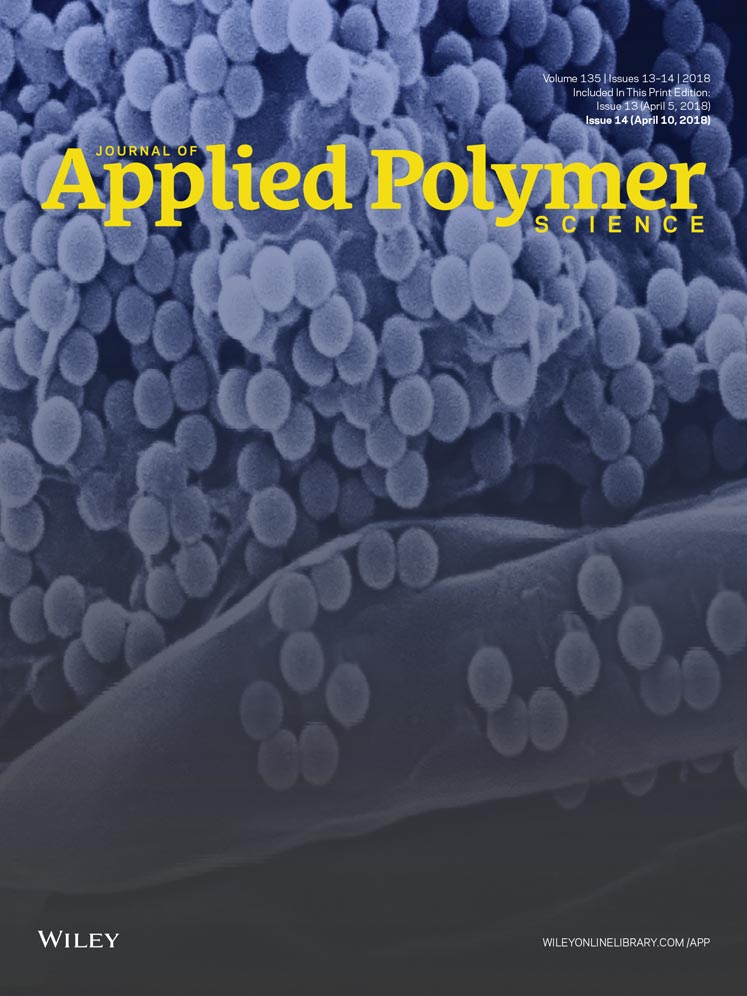Properties of polythiourethanes prepared by thiol–isocyanate click reaction
ABSTRACT
Polythiourethane networks with systematic compositional variations of thiol [ethoxylated trimethylol-propane tri(3-mercapto-propionate), ETTMP1300 and pentaerythritol tetra(3-mercapto-propionate), PETMP] and isophorone diisocyanate (IPDI), i.e., IPDI/ETTMP1300/PETMP = 100/100/0, 100/80/20, 100/60/40, 100/40/60, 100/20/80, and 100/0/100, were prepared by base catalyzed thiol–isocyanate click type reaction where the base catalyst (tributylamine, TBA) was photolytically generated using photolatent amine (TBA·tetraphenylborate salt, TBA·HBPh4). The kinetics of the polythiourethane network formation investigated using real-time infrared indicates that the thiol–isocyanate coupling reaction was successfully triggered photolytically and the conversion of both thiol and isocyanate reached near 100% in a matter of minutes. The Tg of the polythiourethane networks progressively increases (–8 to 143 °C by DMTA) as a function of the PETMP content due to the higher extent of crosslinks, also resulting in enhanced rubbery modulus. Very narrow full width at half maximum (15–28 °C) of tan δ peak was obtained for all six sets of polythiourethane networks, which is induced by the highly uniform and dense structures of thiol-based polymeric network. Energy damping performance of polythiourethane networks measured by nondestructive impact testing exhibited remarkably high (∼95%) and the relationship with temperature was in accordance with tan δ peak. © 2017 Wiley Periodicals, Inc. J. Appl. Polym. Sci. 2018, 135, 46070.




